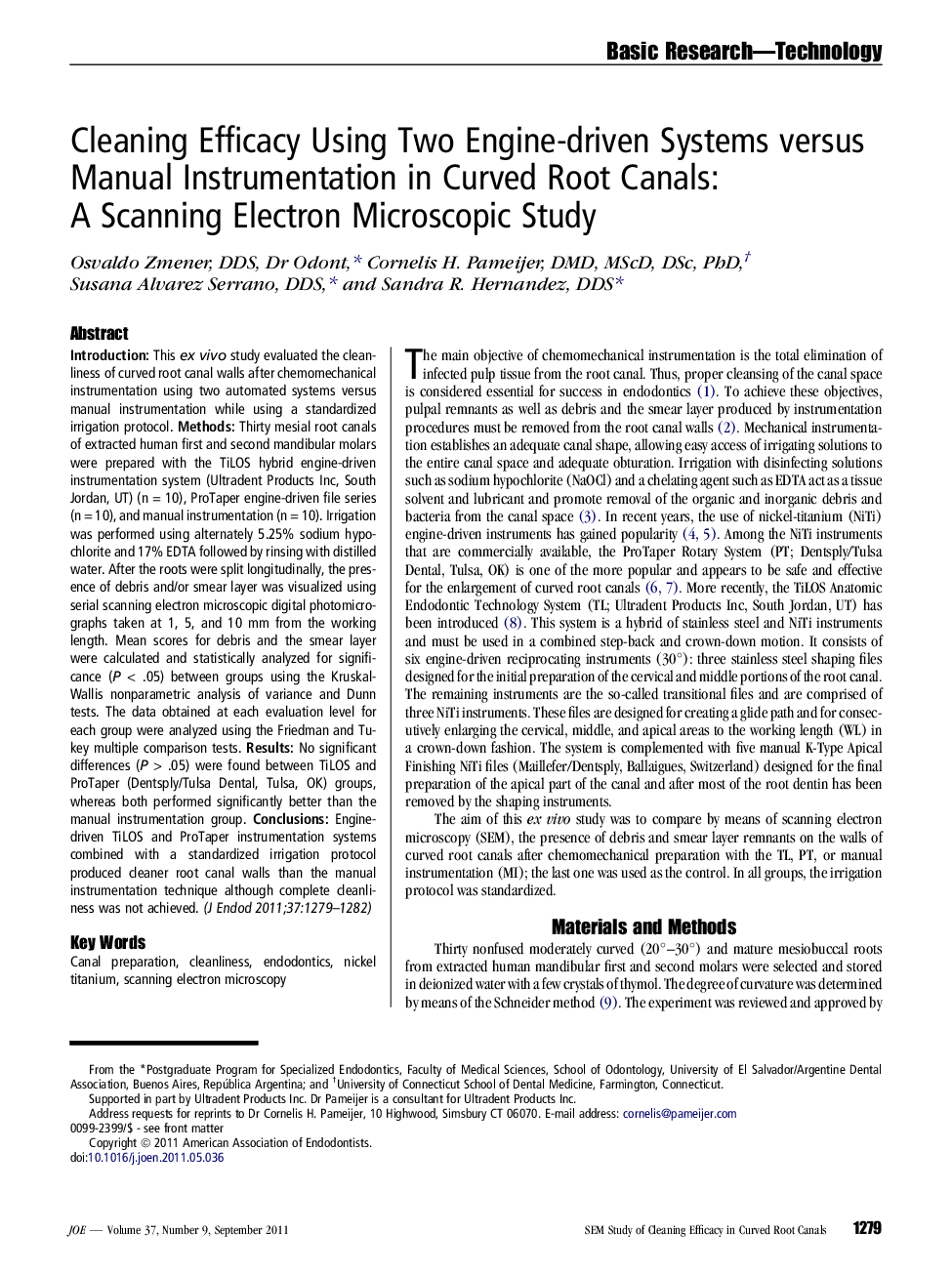| Article ID | Journal | Published Year | Pages | File Type |
|---|---|---|---|---|
| 3147834 | Journal of Endodontics | 2011 | 4 Pages |
IntroductionThis ex vivo study evaluated the cleanliness of curved root canal walls after chemomechanical instrumentation using two automated systems versus manual instrumentation while using a standardized irrigation protocol.MethodsThirty mesial root canals of extracted human first and second mandibular molars were prepared with the TiLOS hybrid engine-driven instrumentation system (Ultradent Products Inc, South Jordan, UT) (n = 10), ProTaper engine-driven file series (n = 10), and manual instrumentation (n = 10). Irrigation was performed using alternately 5.25% sodium hypochlorite and 17% EDTA followed by rinsing with distilled water. After the roots were split longitudinally, the presence of debris and/or smear layer was visualized using serial scanning electron microscopic digital photomicrographs taken at 1, 5, and 10 mm from the working length. Mean scores for debris and the smear layer were calculated and statistically analyzed for significance (P < .05) between groups using the Kruskal-Wallis nonparametric analysis of variance and Dunn tests. The data obtained at each evaluation level for each group were analyzed using the Friedman and Tukey multiple comparison tests.ResultsNo significant differences (P > .05) were found between TiLOS and ProTaper (Dentsply/Tulsa Dental, Tulsa, OK) groups, whereas both performed significantly better than the manual instrumentation group.ConclusionsEngine-driven TiLOS and ProTaper instrumentation systems combined with a standardized irrigation protocol produced cleaner root canal walls than the manual instrumentation technique although complete cleanliness was not achieved.
